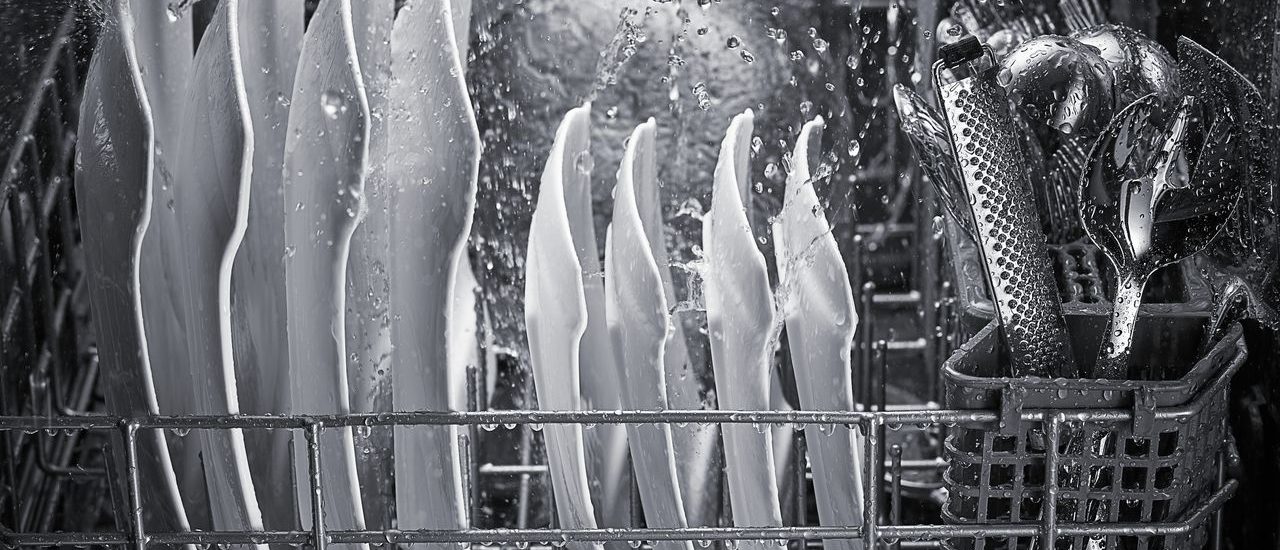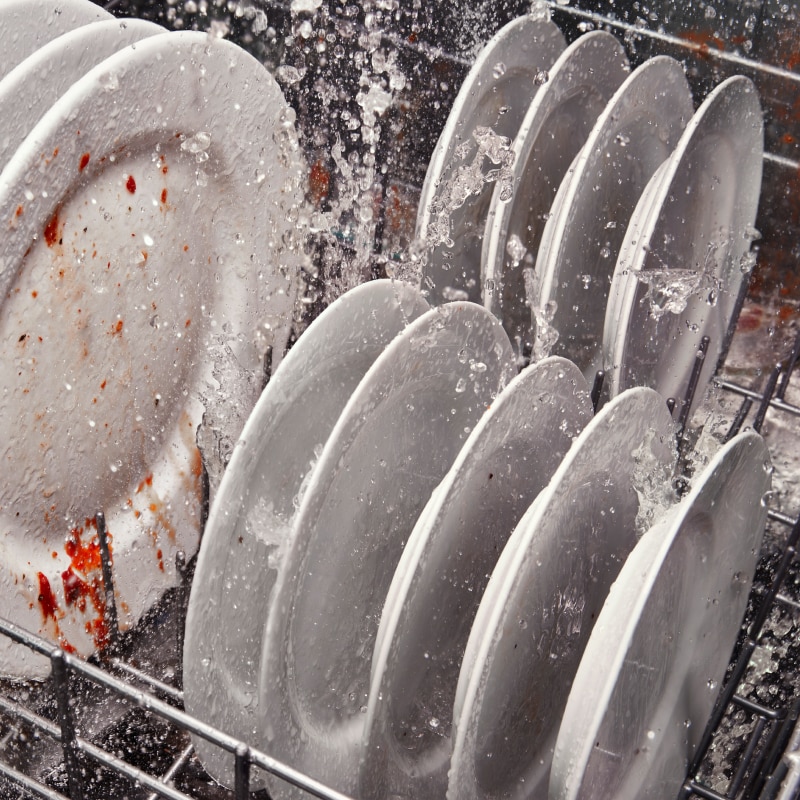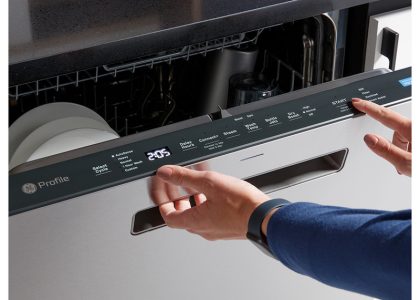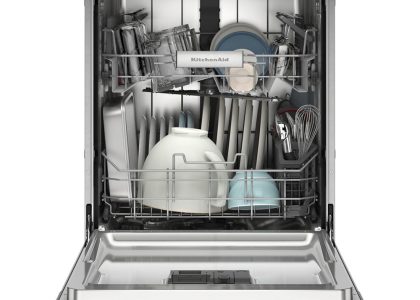Introduction to Dishwasher Draining Issues
Discovering standing water in your dishwasher can be puzzling and frustrating. This issue often stems from clogged drainage components or malfunctioning hardware within your appliance. There are several reasons for a dishwasher not to drain properly, ranging from food blockages in the filter to a kink in the drain hose. Residue build-up or a faulty pump could also cause water to remain in the dishwasher’s bottom. Understanding the various causes of drainage problems is key to effectively addressing them and preventing further issues.
How to drain a dishwasher with standing water? In this guide, we will explore simple and effective techniques to drain a dishwasher experiencing standing water. We will also provide preventative maintenance tips to keep your dishwasher running smoothly. Armed with the right knowledge and tools, you can usually fix minor draining issues yourself, avoiding unnecessary service fees. However, for more complex problems, it may be best to seek professional assistance. Let’s delve into the steps and solutions to tackle dishwasher draining challenges.
Safety First: Turning Off Power Before Taking Action
How to drain a dishwasher with standing water? Before you start resolving any issues with your dishwasher, prioritizing safety is crucial. Always turn off the power to the dishwasher before beginning any maintenance or troubleshooting efforts. This precautionary measure prevents the risk of electrical shock and ensures a safe working environment.
To turn off the power, you have two options:
- Unplug the Dishwasher: Look for the dishwasher’s plug under the sink or behind the appliance. Gently pull to disconnect it from the electrical outlet.
- Switch Off the Circuit Breaker: Locate your home’s electrical service panel and find the breaker specifically labeled for the dishwasher. Flip the switch to the ‘off’ position.
Once the power is safely disconnected, you can proceed with inspecting and addressing the standing water in your dishwasher. Remember, if at any point you feel unsure or unsafe, it’s best to stop and consult a professional. Taking these initial safety precautions lays the foundation for a successful and hazard-free DIY repair.
Preparing to Drain: Removing and Cleaning Essentials
Before you can tackle the standing water, you must prepare your dishwasher for draining. Start by emptying the dishwasher of all dishes and removing the racks. This step allows you unobstructed access to the bottom of the machine where water collects. Next, surround the area with towels or newspapers. This helps to catch any water that might spill during the draining process.
Once cleared, ensure the dishwasher is off and unplugged. This is a critical safety measure to prevent any electrical hazards. With your work area prepped, you’re now ready to begin the process of manually removing the water.
Use a cup or a small container to scoop out as much water as you can. Pour the scooped water into the sink or a bucket. When the water level gets too low to scoop, switch to using old towels or sponges. These help to absorb the remaining moisture and small debris. Make sure to wring out the towels or sponges into the sink or bucket as you work.
With the majority of the water out, it’s time to focus on the filter system. Located at the bottom of your dishwasher, the filter can often be a culprit in blockages and slow drainage. Consult your dishwasher’s manual to locate and remove the filter correctly. Clean it thoroughly with hot soapy water, using a soft-bristle brush to remove any trapped particles. After cleaning, check the area around the filter and the sump where the filter sits for any trapped food or debris. Clearing out these areas can significantly improve your dishwasher’s ability to drain.
Checking and Cleaning the Drainage System
Once you’ve removed the standing water, inspect your dishwasher’s drainage system. Here’s how to do that effectively:
- Check the Drain: Look for the drain at the bottom of the dishwasher. Check for obvious clogs or food debris that could block the water flow.
- Examine the Filter: Remove the filter and rinse it under hot water. Use a brush to scrub off any gunk or food particles. Regular cleaning prevents blockages.
- Inspect the Drain Hose: Ensure the hose isn’t kinked or blocked. Straighten out any bends. If there’s a blockage, gently use a coat hanger to clear it.
- Look at the Garbage Disposal: Sometimes, the drain connected to your disposal can cause issues. Run the disposal to clear any potential clogs.
- Test the Valve: The drain valve should move freely. If it’s stuck, it could be the source of the problem. The valve typically requires professional repair if faulty.
- Run a Test Cycle: After checking and cleaning, run a short cycle. This helps to ensure that water is draining as it should.
These steps are geared towards resolving common issues that can stop a dishwasher from draining. In many cases, one of these solutions will fix the problem. However, if these fixes do not resolve the drainage issue, the pump may be at fault, which could require professional attention.
Troubleshooting Blockages: Filters, Hoses, and Pumps
When your dishwasher won’t drain, the blockage is often at fault. Here’s how to troubleshoot the main areas where blockages can occur.
Checking the Filter for Clogs
Start with the filter, often the culprit in drainage issues. It’s located at your dishwasher’s base. Remove and rinse it thoroughly under hot water. If it’s clogged, use a soft brush to clear out residue. Remember, a clean filter is key to a fully functioning dishwasher.
Inspecting the Drain Hose
Next, check the drain hose for kinks or blockages. It usually runs from the dishwasher to the sink. Straighten any kinks and check for obstructions. If you suspect a clog, gently clear it with a flexible tool, like a coat hanger.
Examining the Dishwasher Pump
Finally, look at the pump. It moves water out of your dishwasher. If you find debris here, it might stop the pump from working right. You may need to manually rotate the pump’s blades to ensure they move freely. If you feel resistance, there could be an object blocking the blades. Be cautious, as removing blockages from the pump often requires professional help.
If these steps haven’t fixed the drain problem, it could mean the pump is failing. In such cases, calling a professional may be your best bet.
By regularly checking and cleaning these components, you can often prevent blockages. But, for persistent issues or pump problems, seek expert help to avoid further damage to your appliance.
Natural Drain Cleaning Solutions: Baking Soda and Vinegar
If you still see water after checking the dishwasher’s system, try a natural cleaner. Baking soda and vinegar can break down food particles and grease, helping to clear minor clogs. Not only are they effective, but they’re also safer for your dishwasher than harsh chemicals.
Follow these steps for a natural cleaning solution:
- Make a Baking Soda Paste: Combine one-half cup of baking soda with a little water to make a paste.
- Spread the Paste: Put the paste in the dishwasher’s drain. Make sure to cover any visible blockages.
- Add Vinegar: Pour one-half cup of white vinegar into the drain over the baking soda paste. These ingredients react and help clear the drain.
- Wait for the Reaction: Let the mixture bubble and fizz for about 15 minutes. This reaction helps to break down clogs.
- Flush With Hot Water: After 15 minutes, pour hot water down the drain. This helps to rinse away the loosened debris.
This method is not just for clogs. It’s a good practice to do this regularly to keep your dishwasher clean and odor-free. However, if water remains after this, you may have a more serious blockage.
Remember, do not use chemical cleaners. They can harm your dishwasher’s parts. For difficult clogs, it might be time to call a professional.
Preventative Measures: Best Practices for Maintenance
Proper dishwasher maintenance helps prevent future standing water issues. Here’s what to do:
- Clean Regularly: Monthly, remove and scrub the dishwasher filter with hot, soapy water. Also, wipe the gasket and spray arms.
- Run Empty Cycles: Once a month, run an empty dishwasher cycle with a cup of white vinegar on the top rack. This cleans the interior.
- Check Hoses: Regularly inspect the drain hose for kinks or clogs. Straighten or clear them as needed.
- Scrape Dishes: Before loading, scrape food off dishes. This reduces the chance of clogs.
- Use Correct Detergent: Always use the recommended type of detergent to avoid soap build-up.
- Listen for Noises: Pay attention to any unusual sounds. If you hear anything odd, investigate promptly.
- Avoid Overloading: Load your dishwasher properly to make sure water can flow freely.
- Professional Servicing: Once a year, have a professional inspect and service your dishwasher. This can catch issues early.
By following these steps, you’ll reduce the risk of draining problems. These practices keep your dishwasher in good shape, saving you time and money in the long run.
When to Call a Professional: Recognizing the Need for Expert Help
Sometimes, you might need a pro. Here’s when to call:
- After DIY Fixes Fail: If you’ve tried all the steps and water’s still there, get help.
- If there’s a Pump Issue: Can’t fix the pump yourself? A pro should look at it.
- When There’s Major Damage: Find leaks or broken parts? That’s a job for a technician.
- If You’re Not Confident: Unsure about any steps? Better to call an expert.
- Before Warranty Expires: Got a warranty? Use it before it runs out. Call for service.
- For Regular Maintenance: Once a year, ask a pro to check and service your dishwasher.
Remember, fixing a dishwasher can be complex. A trained technician has the tools and know-how. They can spot problems you might miss.








